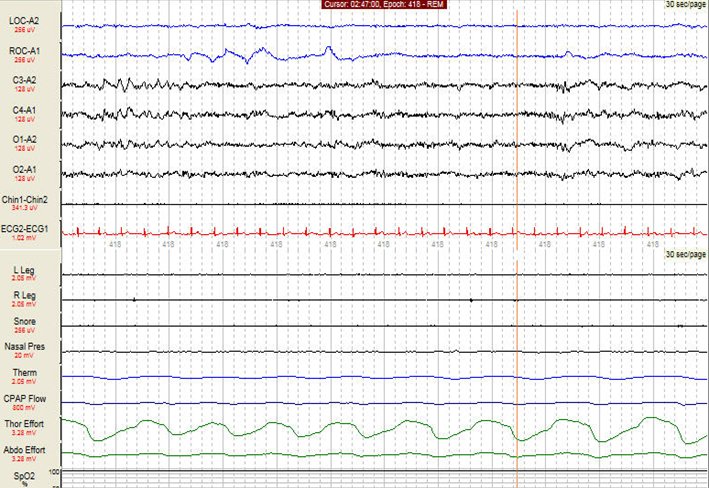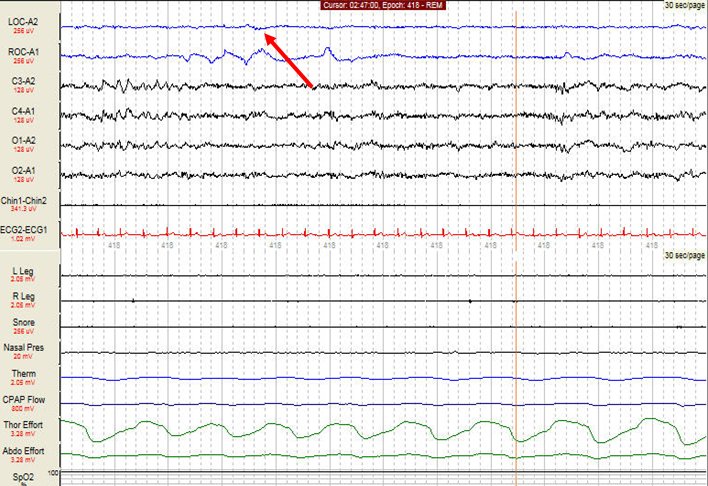Contributed by Klar Yaggi, MD, Yale University School of Medicine, New Haven, CT
No corresponding conjugate eye movements are detected in the LOC channel. The patient has a prosthetic left eye.
A potential difference exists across the normal eyeball with a posterior negativity centered on the retina and relative positivity at the cornea. This approximates a dipole and makes possible recording of eye movements because eye movements change the orientation of this dipole. By strategically placing EOG electrodes 1 cm superior and lateral to the outer canthus of one eye and another electrode 1 cm inferior and lateral to the outer canthus of the other eye, it is possible to detect conjugate horizontal and vertical eye movements by observing out-of–phase deflections (e.g. one up, one down) in the electro-oculogram tracings.
This fragment is of a patient with a prosthetic left eye which does not have a potential difference. The arrow points out that no eye movements are detected in the left oculogram.
Reference:
Chokroverty S, ed. Sleep Disorders Medicine: Basic Science, Technical Considerations, and Clinical Aspects. Second ed. Boston: Butterworth and Heinemann; 1999.





